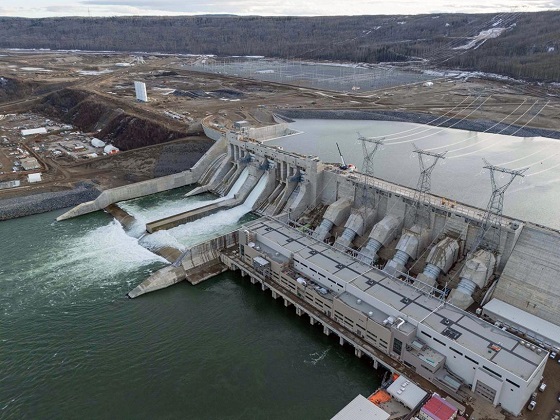National
Over 20 Liberal MPs reportedly sign document calling on Trudeau to step down
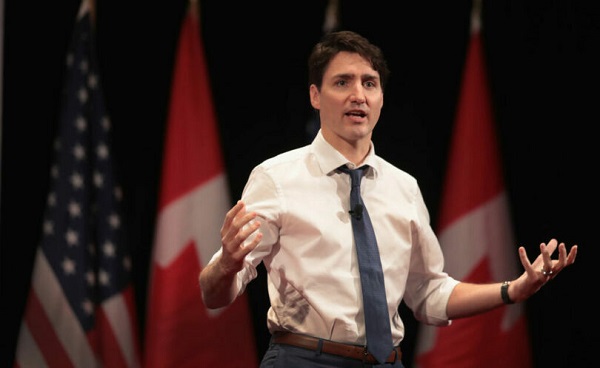
From LifeSiteNews
A growing number of Liberal MPs are working to oust Justin Trudeau following two disastrous by-election results in ‘safe’ ridings in Toronto and Montreal and a growing mountain of scandals.
A number of Liberal Members of Parliament are reportedly mounting new efforts to oust Prime Minister Justin Trudeau amid his plummeting popularity.
According to information obtained by CBC News, around 20 Liberal MPs have signed a document to call on Trudeau to be removed as leader of the Liberal Party, following two disastrous by-election results in “safe” ridings in Toronto and Montreal.
“Pressure is building on the prime minister and his office as a growing number of anxious Liberal MPs are co-ordinating efforts to force Justin Trudeau to step down as Liberal Party leader,” the report stated.
According to the reported sources, the document is not merely a letter, but rather a “vehicle to secure commitment” for a change in leadership in the floundering Liberal Party.
While the exact number of signatories is not known, MPs reportedly told CBC News that a minimum of 20 have given their support for the move. One MP reportedly disclosed that the names have “spilled onto a second page” as more and more MPs wish to sign on.
The document is reportedly being tightly guarded, with no copies or photos being circulated.
In addition to the clandestine document, others have begun to publicly decry Trudeau’s leadership and call for his resignation. Earlier this week, Liberal MP Sean Casey of Charlottetown, Prince Edward Island, told CBC News that Trudeau’s time as leader has ended, making him the second MP this week to make such a declaration.
“My job has always been to project the voice of the people I represent in Ottawa, to be Charlottetown’s representative in Ottawa, and not the reverse,” he said. “And the message that I’ve been getting loud and clear and more and more strongly as time goes by is that it’s time for him to go. And I agree.”
Casey’s statement echoes Montreal Liberal MP Anthony Housefather who told CTV News that it is time for the Liberal Party to discuss who will lead them into the 2025 election.
“I support whoever is leader in my party at all times,” he said. “But that doesn’t mean there shouldn’t be a robust caucus discussion about who the best person to lead us in the next election is, and that discussion should happen in caucus. It shouldn’t happen in the media.”
Calls for Trudeau’s resignation come on top of the numerous Liberal MPs, including former cabinet ministers, who have vacated their seats or who have announced that they will not be running for re-election.
In addition to calls from the political class for Trudeau’s resignation, or at the very least their distancing themselves from his leadership, Canadian citizens have also had enough of the prime minister’s tyrannical rule over the country. Trudeau’s trampling of basic freedoms, reckless spending, and endless lies have finally woken up Canadians to the state of the nation.
Polls continue to uncover the upset of Canadians toward the current government, whether it be the 70 percent found who believe the country is “broken,” or the majority of citizens who report being worse off financially since Trudeau took office.
Additional polls show that the scandal-plagued government has sent the Liberals into a nosedive with no end in sight, with a September poll showing that the Conservatives under Pierre Poilievre would win a landslide majority government were an election held today.
Energy
75 per cent of Canadians support the construction of new pipelines to the East Coast and British Columbia

-
71 per cent of Canadians find the approval process too long.
-
67 per cent of Quebecers support the Marinvest Energy natural gas project.
“While there has always been a clear majority of Canadians supporting the development of new pipelines, it seems that the trade dispute has helped firm up this support,” says Gabriel Giguère, senior policy analyst at the MEI. “From coast to coast, Canadians appreciate the importance of the energy industry to our prosperity.”
Three-quarters of Canadians support constructing new pipelines to ports in Eastern Canada or British Columbia in order to diversify our export markets for oil and gas.
This proportion is 14 percentage points higher than it was last year, with the “strongly agree” category accounting for almost all of the increase.
For its part, Marinvest Energy’s natural gas pipeline and liquefaction plant project, in Quebec’s North Shore region, is supported by 67 per cent of Quebecers polled, who see it as a way to reduce European dependence on Russian natural gas.
Moreover, 54 per cent of Quebecers now say they support the development of the province’s own oil resources. This represents a six-point increase over last year.
“This year again, we see that this preconceived notion according to which Quebecers oppose energy development is false,” says Mr. Giguère. “Quebecers’ increased support for pipeline projects should signal to politicians that there is social acceptability, whatever certain lobby groups might think.”
It is also the case that seven in ten Canadians (71 per cent) think the approval process for major projects, including environmental assessments, is too long and should be reformed. In Quebec, 63 per cent are of this opinion.
The federal Bill C-5 and Quebec Bill 5 seem to respond to these concerns by trying to accelerate the approval of certain large projects selected by governments.
In July, the MEI recommended a revision of the assessment process in order to make it swift by default instead of creating a way to bypass it as Bill C-5 and Bill 5 do.
“Canadians understand that the burdensome assessment process undermines our prosperity and the creation of good, well-paid jobs,” says Mr. Giguère. “While the recent bills to accelerate projects of national interest are a step in the right direction, it would be better simply to reform the assessment process so that it works, rather than creating a workaround.”
A sample of 1,159 Canadians aged 18 and older were surveyed between November 27 and December 2, 2025. The results are accurate to within ± 3.5 percentage points, 19 times out of 20.
espionage
Carney Floor Crossing Raises Counterintelligence Questions aimed at China, Former Senior Mountie Argues
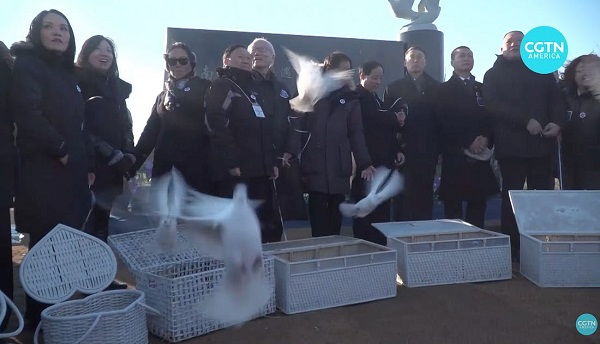
Michael Ma has recently attended events with Chinese consulate officials, leaders of a group called CTCCO, and the Toronto “Hongmen,” where diaspora community leaders and Chinese diplomats advocated Beijing’s push to subordinate Taiwan. These same entities have also appeared alongside Canadian politicians at a “Nanjing” memorial in Toronto.
By Garry Clement
Michael Ma’s meeting with consulate-linked officials proves no wrongdoing—but, Garry Clement writes, the timing and optics highlight vulnerabilities Canada still refuses to treat as a security issue.
I spent years in the Royal Canadian Mounted Police learning a simple rule. You assess risk based on capability, intent, and opportunity — not on hope or assumptions. When those three factors align, ignoring them is negligence.
That framework applies directly to Canada’s relationship with the People’s Republic of China — and to recent political events that deserve far more scrutiny than they have received.
Michael Ma’s crossover to the Liberal Party may be completely legitimate, although numerous observers have noted oddities in the timing, messaging, and execution surrounding Ma’s move, which brings Mark Carney within one seat of majority rule.
There is no evidence of wrongdoing.
But from a law enforcement and national security perspective, that is beside the point. Counterintelligence is not about proving guilt after the fact; it is about identifying vulnerabilities before damage is done — and about recognizing when a situation creates avoidable exposure in a known threat environment.
A constellation of ties and public appearances — reported by The Bureau and the National Post — has fueled questions about Ma’s China-facing judgment and vetting. Those reports describe his engagement with a Chinese-Canadian Conservative network that intervened in party leadership politics by urging Erin O’Toole to resign for his “anti-China” stance after 2021 and later calling for Pierre Poilievre’s ouster — while advancing Beijing-aligned framing on key Canada–China disputes.
The National Post has also reported that critics point to Ma’s pro-Beijing community endorsement during his campaign, and his appearance at a Toronto dinner for the Chinese Freemasons — where consular officials used the forum to promote Beijing’s “reunification” agenda for Taiwan. Ma reportedly offered greetings and praised the organization, but did not indicate support for annexation.
Open-source records also show that the same Toronto Chinese Freemasons and leaders Ma has met from a group called CTCCO sponsored and supported Ontario’s “Nanjing Massacre Commemorative Day” initiative (Bill 79) — a campaign celebrated in Chinese state and Party-aligned media, alongside public praise from PRC consular officials in Canada.
China Daily reported in 2018 that the Nanjing memorial was jointly sponsored by CTCCO and the Chinese Freemasons of Canada (Toronto), supported by more than $180,000 in community donations.
Photos show that PRC consular officials and Toronto politicians appeared at related Nanjing memorial ceremonies, including Zhao Wei, the alleged undercover Chinese intelligence agent later expelled from Canada after The Globe and Mail exposed Zhao’s alleged targeting of Conservative MP Michael Chong and his family in Hong Kong.
The fact that Michael Ma recently met with some of the controversial pro-Beijing community figures and organizations described above — including leaders from the Hongmen ecosystem and the CTCCO — does not prove any nefarious intent in either his Conservative candidacy or his decision to cross the floor to Mark Carney.
But it does demonstrate something Ottawa keeps avoiding: the PRC’s influence work is often conducted in plain sight, through community-facing institutions, elite access, and “normal” relationship networks — the very channels that create leverage, deniability, and political pressure over time.
Canada’s intelligence community has been clear.
The Canadian Security Intelligence Service has repeatedly identified the People’s Republic of China as the most active and persistent foreign interference threat facing Canada. These warnings are not abstract. They are rooted in investigations, human intelligence, and allied reporting shared across the Five Eyes intelligence alliance.
At the center of Beijing’s approach is the United Front Work Department — a Chinese Communist Party entity tasked with influencing foreign political systems, cultivating elites, and shaping narratives abroad. In policing terms, it functions as an influence and access network: operating legally where possible, covertly where necessary, and always in service of the Party’s strategic objectives.
What differentiates the People’s Republic of China from most foreign actors is legal compulsion.
Under China’s National Intelligence Law, Chinese citizens and organizations can be compelled to support state intelligence work and to keep that cooperation secret. In practical terms, that creates an inherent vulnerability for democratic societies: coercive leverage — applied through family, travel, business interests, community pressure, and fear.
This does not mean Chinese-Canadians are suspect.
Quite the opposite — many are targets of intimidation themselves. But it does mean the Chinese Communist Party has a mechanism to exert pressure in ways democratic states do not. Ignoring that fact is not tolerance; it is a failure to understand the threat environment.
In the RCMP, we were trained to recognize that foreign interference rarely announces itself. It operates through relationships, access, favors, timing, and silence. It does not require ideological agreement — only opportunity and leverage.
That is why transparency matters. When political figures engage with representatives of an authoritarian state known for interference operations, the burden is not on the public to “prove” concern is justified. The burden is on officials to explain why there is none — and to demonstrate that basic safeguards are in place.
Canada’s allies have already internalized this reality. Australia, the United States, and the United Kingdom have all publicly acknowledged and legislated against People’s Republic of China political interference. Their assessments mirror ours. Their conclusions are the same.
In the United States, the Linda Sun case — covered by The Bureau — illustrates, in the U.S. government’s telling, how United Front–style influence can be both deniable and effective: built through diaspora-facing proxies, insider access, and relationship networks that rarely look like classic espionage until the damage is done.
And this is not a niche concern.
Think tanks in both the United States and Canada — as well as allied research communities in the United Kingdom and Europe — have documented the scale and persistence of these political-influence ecosystems. Nicholas Eftimiades, an associate professor at Penn State and a former senior National Security Agency analyst, has estimated multiple hundreds of such entities are active in the United States. How many operate in Canada is the question Ottawa still refuses to treat with urgency — and, if an upcoming U.S. report is any indication, the answer may be staggering.
Canada’s hesitation to address United Front networks is not due to lack of information. It is due to lack of resolve.
From a law enforcement perspective, this is troubling. You do not wait for a successful compromise before tightening security. You act when the indicators are present — especially when your own intelligence agencies are sounding the alarm.
National security is not ideological. It is practical.
The Bureau is a reader-supported publication.
To receive new posts and support my work, consider becoming a free or paid subscriber.
-

 Automotive15 hours ago
Automotive15 hours agoPoliticians should be honest about environmental pros and cons of electric vehicles
-

 Daily Caller2 days ago
Daily Caller2 days ago‘Almost Sounds Made Up’: Jeffrey Epstein Was Bill Clinton Plus-One At Moroccan King’s Wedding, Per Report
-

 Crime2 days ago
Crime2 days agoBrown University shooter dead of apparent self-inflicted gunshot wound
-
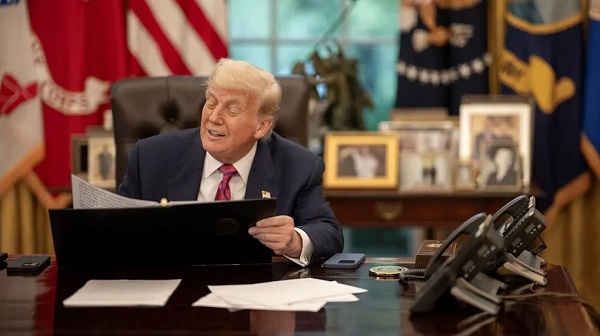
 Business2 days ago
Business2 days agoTrump signs order reclassifying marijuana as Schedule III drug
-

 Bruce Dowbiggin1 day ago
Bruce Dowbiggin1 day agoHunting Poilievre Covers For Upcoming Demographic Collapse After Boomers
-

 Alberta1 day ago
Alberta1 day agoAlberta’s new diagnostic policy appears to meet standard for Canada Health Act compliance
-
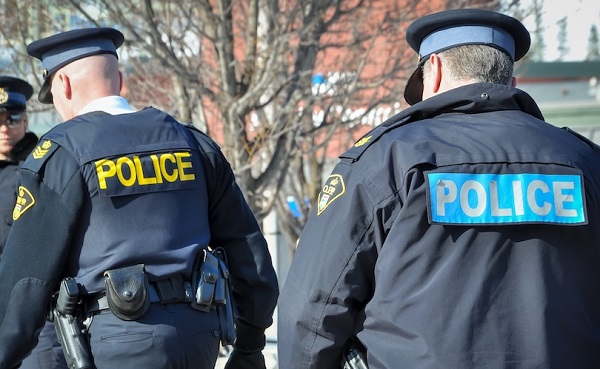
 Censorship Industrial Complex1 day ago
Censorship Industrial Complex1 day agoTop constitutional lawyer warns against Liberal bills that could turn Canada into ‘police state’
-

 Business1 day ago
Business1 day agoState of the Canadian Economy: Number of publicly listed companies in Canada down 32.7% since 2010







